DATA SOURCE(S): 1,15,34,36,46
Common Name(s): Verawood, Maracaibo lignum vitae, vera
Scientific Name: Plectrocarpa arborea (formerly placed in the Bulnesia genus; see comments below)
Distribution: Colombia and Venezuela
Tree Size: 40-50 ft (12-15 m) tall,
1-2 ft (.3-.6 m) trunk diameter
Average Dried Weight: 74.6 lbs/ft3 (1,195 kg/m3)
Specific Gravity (Basic, 12% MC): .97, 1.12
Janka Hardness: 3,810 lbf (16,950 N)*
*Estimated hardness based on specific gravity.
Strength and Shrinkage: No data available; most likely very similar to Argentine Lignum Vitae (Plectrocarpa sarmientoi)
Color/Appearance: Heartwood color can range from pale yellowish olive to a deeper forest green or dark brown. The color tends to darken with age, especially upon exposure to light. Pale yellow sapwood is clearly demarcated from heartwood. Quartersawn grain has a unique feathered or herringbone pattern when viewed up close.
Grain/Texture: Grain is usually interlocked. Fine even texture with very high natural luster.
Rot Resistance: Verawood is reported to be very durable for outdoor use and is said to last “indefinitely”[1]Chudnoff, M. (1984). Tropical timbers of the world (p. 56). US Department of Agriculture, Forest Service. in direct ground contact; verawood is also resistant to insect attack.
Workability: Verawood has a tendency to skip over-top jointer cutters on account of its extremely high density, and very light passes are recommended. Verawood will also dull cutters, and overall it’s considered quite difficult to work. Also, due to its high oil content and hardness, it is very difficult to get a strong and reliable glue joint and can cause problems during finishing. However, verawood is an exceptional wood for turning on the lathe, and takes on an excellent natural luster.
Odor: Verawood has a distinct, perfume-like fragrance that lingers even after it has been machined.
Allergies/Toxicity: Verawood sawdust has been reported to cause sneezing, and the closely related lignum vitae has been reported to cause skin irritation. See the articles Wood Allergies and Toxicity and Wood Dust Safety for more information.
Pricing/Availability: Should be priced in the mid to upper range of imported exotic woods, with increasing scarcity. Turning blanks and other small pieces are sometimes available, comparing similarly with other premium tropical hardwoods. Larger pieces of craft lumber are less common but are also occasionally available.
Sustainability: This wood species is not listed in the CITES Appendices, and is reported by the IUCN as being a species of least concern. However, the closely related (and nearly anatomically indistinguishable) Argentine lignum vitae (Plectrocarpa sarmientoi) is listed as endangered and is CITES-listed in Appendix II. This latter (protected) species is more commonly seen on the commercial market, and unless directly specified as coming from Colombia, Venezuela, or the Caribbean, it is most likely P. sarmientoi.
Common Uses: Tool handles, mallet heads, bearings, bushings, boatbuilding, pulley wheels, heavy construction (in areas where the tree grows locally), and turned objects.
Comments: Verawood has very similar appearances and working characteristics to true lignum vitae (Guaiacum spp.), and is sometimes referred to as Maracaibo lignum vitae—named for the nearby Venezuelan port city. Plectrocarpa arborea is native to the coastal regions of Puerto Cabello and Lake Maracaibo, though it has also been introduced to neighboring islands in the Carribean.[2]Limonggi, T. 2023. Gonopterodendron arboreum. The IUCN Red List of Threatened Species 2023: e.T61968113A61968118. https://dx.doi.org/10.2305/IUCN.UK.2023-1.RLTS.T61968113A61968118.es. Accessed … Continue reading Though verawood is in a different genus than lignum vitae, (Plectrocarpa and Guaiacum, respectively) both genera are biologically classified in the same family: Zygophyllaceae. Both woods are extremely hard, heavy, oily, and have a distinct brownish olive color.
Recent genetic tests have shown that the two commercial species formerly placed in the Bulnesia genus belong in a separate genera. The initial report proposed these species be placed in Gonopterodendron—in the case of verawood, Gonopterodendron arboreum,[3]Godoy-Bürki, A. C., Acosta, J. M., & Aagesen, L. (2018). Phylogenetic relationships within the New World subfamily Larreoideae (Zygophyllaceae) confirm polyphyly of the disjunct genus … Continue reading though subsequent classifications have placed these species in the genus Plectrocarpa.[4]Govaerts, R., Nic Lughadha, E., Black, N., Turner, R., & Paton, A. (2021). The World Checklist of Vascular Plants, a continuously updated resource for exploring global plant … Continue reading
Images: Drag the slider up/down to toggle between raw and finished wood.
Identification: See the article on Hardwood Anatomy for definitions of endgrain features.
Porosity: diffuse porous; growth rings sometimes subtly discernible due to decrease in pore frequency and size in latewood
Arrangement: predominantly radial multiples, pore chains, and sometimes clusters; in diagonal/radial arrangement (and sometimes dendritic)
Vessels: small to medium, moderately numerous to numerous
Parenchyma: diffuse-in-aggregates and vasicentric, though in practice parenchyma not really visible, even under 10x magnification
Rays: narrow width, normal spacing; rays not visible without magnification
Lookalikes/Substitutes: On account of its greenish color and high density, greenheart is one of the most commonly confused hardwoods with verawood. Other dense, olive-hued hardwoods (usually used for decking) can bear a similarity to verawood, such as ipe, cumaru, jucaro, and angelim vermelho—though all these woods lack the radial multiples and pore chains found in the unique anatomy of verawood.
Notes: The related species of true lignum vitae (Guaiacum spp.) in the Zygophyllaceae family bear the closest resemblance to verawood—though these species can also be separated from Plectrocarpa from their lack of radial multiples and pore chains. For more information on sorting these related species out, see the article How to Tell Genuine Lignum Vitae from Argentine Lignum Vitae.
Related Content:
References[+]
| ↑1 | Chudnoff, M. (1984). Tropical timbers of the world (p. 56). US Department of Agriculture, Forest Service. |
|---|---|
| ↑2 | Limonggi, T. 2023. Gonopterodendron arboreum. The IUCN Red List of Threatened Species 2023: e.T61968113A61968118. https://dx.doi.org/10.2305/IUCN.UK.2023-1.RLTS.T61968113A61968118.es. Accessed on 11 April 2024. |
| ↑3 | Godoy-Bürki, A. C., Acosta, J. M., & Aagesen, L. (2018). Phylogenetic relationships within the New World subfamily Larreoideae (Zygophyllaceae) confirm polyphyly of the disjunct genus Bulnesia. Systematics and Biodiversity, 16(5), 453-468. |
| ↑4 | Govaerts, R., Nic Lughadha, E., Black, N., Turner, R., & Paton, A. (2021). The World Checklist of Vascular Plants, a continuously updated resource for exploring global plant diversity. Scientific data, 8(1), 215. |


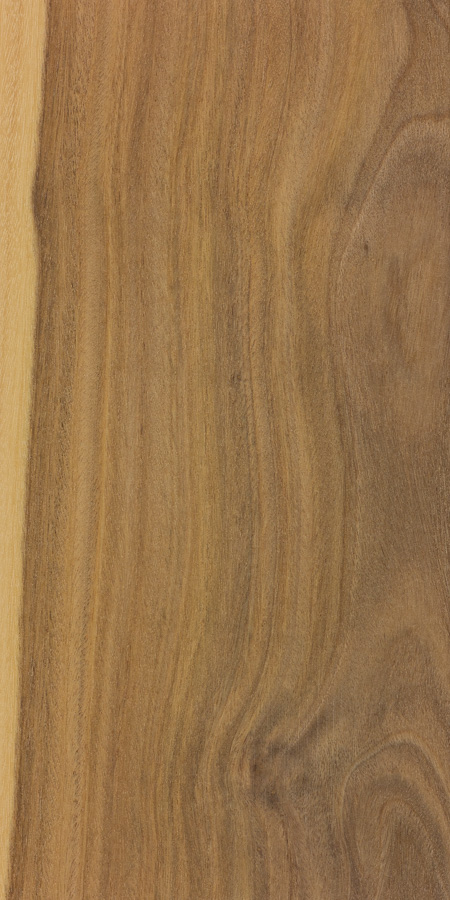
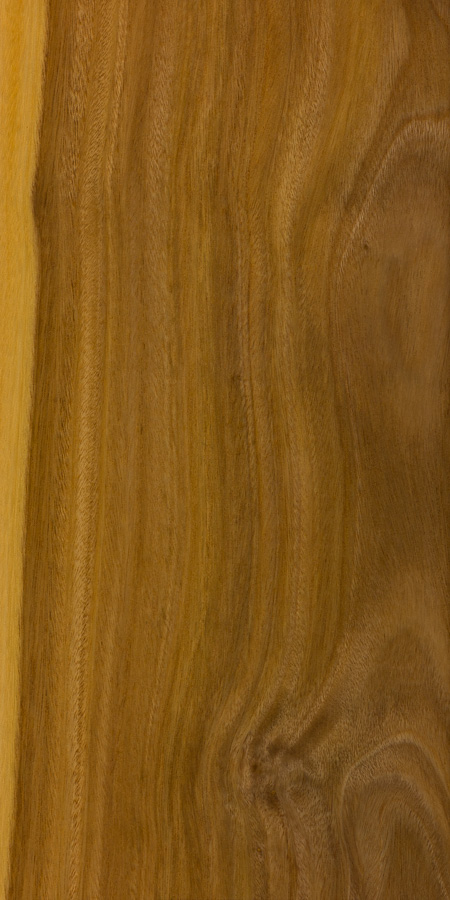
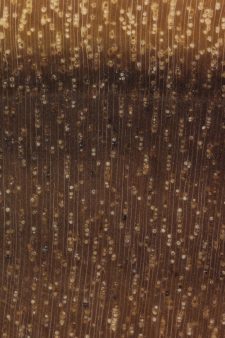




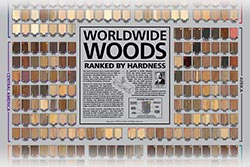

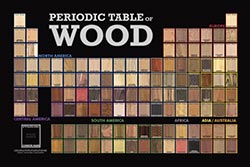


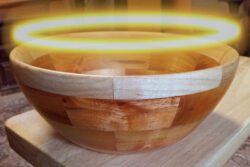






I`m pretty sure that the Bulnesia genus has ben renamed Gonopterodendron ( not Plectrocarpa) .
At the present (2024), I think the confusion stems from the original study that proposed splitting up the Bulnesia genus first placed these species in the Gonopterodendron genus, but they have since been placed in Plectrocarpa. At the present time, I can’t really find any authoritative sources that still place these species in Gonopterodendron. Both World Flora Online https://www.worldfloraonline.org/taxon/wfo-0001423901 and Royal Botanic Gardens Kew https://powo.science.kew.org/taxon/urn:lsid:ipni.org:names:77184861-1 The only commonly used resources that still seem to be using the Gonopterodendron classification are those pertaining to conservation, like CITES and IUCN. But in my experience, these sources tend to be much more on… Read more »
My 95 year old father used to turn plates. I found this one and asked what kind of wood it was made from. He can’t remember the name but says on rare occasions it has this greenish tone. The plate shown is about 15” across and it is very light in weight. Any thoughts on what type of wood it is made from?
Looks like rainbow poplar.
Can you tell me what kind of wood this is? I’m stripping an old desk with laminate and this is what is underneath.
Looks like yellow poplar. Very common to have the green coloration and very common for poplar to be used in furniture frames.
Thank you for responding! I
Just wanted to share some images of how rich these colors can become with some age and exposure. This is a ladle dish I made a little over a year ago. It sees frequent use – getting splashed with hot oil and other cooking debris on a daily basis – and it lives right underneath a window. The colors on the exposed side have darkened to a rich emerald green with streaks of turquoise, straw, and burgundy. The underside hasn’t changed as much due to less UV exposure, and is mostly still shades of brown with some green flakes.
Hi Eric
Can you confirm that this block is not Lignum Vitae?
I bought this as true guaiacum spp. But the end pores look like verawood?
It does smell like perfume and the density is about 1,2 kg/m3.
Is it possible to distinguish Bulnesia arborea from Bulnesia sarmientoi just form
Wood samples? thanks
Yes, from your pictures I can tell that the wood is Bulnesia sp. I don’t know a way to tell the Bulnesia species apart, but the radial (vertical) rows of pores seen on the endgrain show that it is not Guaiacum sp. as mentioned in this article. https://www.wood-database.com/how-to-tell-genuine-lignum-vitae-from-argentine-lignum-vitae/ I suppose you have to be careful with reading the language used to describe the wood. I don’t think it would be incorrect to call this “lignum vitae” without any other qualifiers, as it is pretty closely related to Guaiacum species. However, if the wood was sold as “genuine” lignum vitae, or… Read more »
Letter openers from verawood
Hello Eric, I have been looking for a site like this to help me identify the type of wood that this table is made of. It is an old table that belonged to my Grandmother and had been painted white for what looked like a long time. The first picture is right after I had used a small hand sander to take the old paint off. The second picture was right after I applied 2 thin coats of Polyurethane, no stain at all. Thank you for providing this site, I look forward to hearing from you and finding out what… Read more »
That greenish tint is sometimes from yellow poplar, which can have that same green color in some pieces.
With the yellow popular, how do you recommend refinishing the table
Since there’s so much color variation in the piece, unless you’re comfortable with that amount of variation, I’d recommend using a dark stain to help mask things. One of the few instances where I would recommend using a dark stain. Also make sure your sanding is on point as well, as any cross grain scratches will become very apparent with a dark stain. Then just topcoat with poly.
I just sanded down an old table. It has various colors in the wood that was used.
Can you tell by my picture what type of woods that was used to put this tabletop together.
The dark colors are actually a green .
Looks like yellow poplar to me.
I have a table that I just sanded down like this too! Curious as to what year you estimate your table?
Hi Eric, I’ve recently come across an off-cut of a very heavy wood I’ve had for a long long time and thought it time to work out what it might be. I’ve worked out that it has an average SG of 1.2 & investigating the end-grain I think it must be Verawood. It’s a fairly dark reddy brown – no green or yellow. I’m attaching some photos and would appreciate your input. The photo names should describe what the views are but they are (1) end grain & radial view (2) Tangential view (3) End grain (4) best effort for… Read more »
The pores look too large to be a Bulnesia species. Also the bit of face grain in your first picture looks different too. It looks a lot closer to Eucalyptus to me. Maybe something like jarrah or karri, or perhaps another heavy Eucalyptus species such as ironbark?
Hi Eric, thanks for your reply. I think that maybe my end-grain photo didn’t keep to scale – as I cropped and tidied it up a bit – so it probably looks larger than it should. I have a sample of Jarrah and the pores on that are about 40% to 50% larger than my mystery wood. Also the pore arrangement looks very different. All very puzzling as my mystery wood definitely has an average dry weight of 1.2 and neither of the Eucalyptus (Jarrah and Karri) seem to come near that. However ref your ironbark suggestion I came across… Read more »
Hi Eric, first off I’d like to thank you for providing such a great site..with so many ways of searching for woods. Your book is also very well laid out. Now that I’ve become a wood nerd, I’ve been using both resources quite a bit recently. Every time I come across a new piece of wood I have to find out what it might be! As for the long discussion about my particular piece I wondered if it might be some sort of Acacia, maybe Gidgee. I never realised that the Acacia genus was so huge (apart from all the… Read more »
Have you considered testing it with a blacklight? https://www.wood-database.com/wood-articles/fluorescence-a-secret-weapon-in-wood-identification/
Acacia species very commonly with fluoresce under a blacklight, while eucalypts do not.
Hi Eric, I’ve previously had a try with a UV LED bulb but it didn’t work for me.. I tried it with Jatoba and Afzelia, following your recommendations. Maybe I’ll need to buy a UV backlight flourescent tube.
Just be careful to use a regular/safe blacklight, and not the germicidal UV bulbs as they can be very dangerous.
Mike, I would agree with Eric, this piece does not look like Verawood (colour and endgrain is probably more related to a different species). By chance I have got lots of Verawood/Arg. LV and I have taken the time to inspect several pieces -also comparing them with Lignum Vitae- Try to file/sand it, if you would get a nice -and lasting smell- I could be wrong…
Hi Jose, yes I now don’t think it’s Verawood but have come round to the idea that my wood sample is IPÊ – see my earlier reply. Thanks for your interest. Mike
No problem Mike. It could be Ipe (although Ipe normally is greener), but could also be Sucupira Vermelha (Bowdichia spp)
Hi Jose, I had a look into your suggestion for Sucupira. In my book it only mentions Black Sucupira (Bowdichia nitida), not Vermelha. Certainy the face grain looks a good fit. In my book it states … “The heartwood is a dull reddish-brown to dark chocolate-brown with light yellow paremchyma markings which are noticeable on quartered surfaces as a striped figure”. On my quartersawn surface (see 1st photo) there are light coloured ‘misty’ type markings (flecks?), so maybe these are the paremchyma? I was coming round to my piece being Sucupira until, by chance, I came across a German website… Read more »
Hi Mike, there is also Amarela & Vermelha (it is easy to find the names in Brazilian – I’m not from Brazil though, I’m Spanish :)
https://hobbithouseinc.com/personal/woodpics/sucupira.htm
https://hobbithouseinc.com/personal/woodpics/ipe/ipe%2001%20end%20grain%20closeup%20s50%20plh.htm
From the pictures you provided it looks like closer to IPE…
Agreed, definitely a learning exercice!
Mike, I agree on visual inspection with your identification of it as Ipe, but I’ve gotta ask – what does it smell like when you cut or sand it? Ipe has a scent that to me smells like root beer. I’ve never worked with a wood that smelled quite the same so that’s my go-to test when I think a piece might be Ipe
Hi Rob & Jose, I only have a few relatively small pieces of this mystery wood so I haven’t worked it much other than to prepare the faces for closer inspection. I’m still not convinced that this is IPE as it doesn’t have a distinctive smell when worked. Also, when first cut it looks a rich pink, then light crimson .. no where does it look green. When sealed it is a deep crimson brown colour. Looking at the pictures on the hobbithouseinc site, for Sucupira, many of the end-grain ones look very different to the one I found.. some… Read more »
I’ll admit I’m a little stumped. The first and second pictures you linked at the top of this thread, “(1) end grain & radial view” and “(2) tangential view)”, makes me think of Katalox (https://hobbithouseinc.com/personal/woodpics/katalox.htm) due to the color, yellow veins, and the way that it can show ray flakes when cut at certain angles The endgrain photos look a lot like Jarrah (https://www.hobbithouseinc.com/personal/woodpics/jarrah.htm), although as you mentioned, Jarrah seems to usually be lighter than what you’re measuring for these pieces. That last photo you linked above threw me another curveball – as those distinctive tiger-stripe lines are an unsual… Read more »
Hi, was wondering if this might be verawood. It’s very dense and heavy. Came from a mixed lot of hardwood. I can see faint traces of green in it. It’s at least 20 year old lumber.
Looks like white oak to me. Not verawood.
I was wondering if this is verwood. It is extremely hard. A neighbor who was a woodworker died and kids threw it out a large 3x3x4ft piece. I used my bandsaw to make some t track clamps.
No, that looks like a ring porous hardwood.
Thanks
Would verawood be used in a laminate/veneer in the 1930s or 40s? I was sanding a sapele/mahogany veneer, apparently went too deep, hit a distinct green and yellow cross grain. Was surprised and bummed, but also curious how it might pull if I leave the wear and urethane as is?
I highly doubt it’s verawood underneath. With a greenish grain I would suspect yellow poplar.
I agree with Eric – it will most likely be poplar. Poplar is a very popular wood base for veneered furniture, or for parts that are hidden from view.
End-grain view of a Verawood yo-yo. Easy to turn and finish. Smells good too.
Found this piece at a thrift store and starting sanding it to reveal this beautiful green colored wood!! One side is green and the other side is normal wood hue. Can you identify this?
I am refinishing a little vanity that came from my great Grandmothers place originally. As I stripped off the years of accumulated stains and varnish I was delighted to find initials carved into the surface of a couple of the drawers and the top surface belonging to my long gone Great Uncle. The next surprise is this small section that has a greenish hue totally different from the rest of the piece. Can you identify what type it is?
It’s hard to say for sure without a look a the endgrain. I would say, unless you are located somewhere in South America, it’s almost certainly not verawood. In the eastern US, yellow poplar is a hardwood that’s used in furniture that can have a greenish hue.
Hello! Thoughts on this bowl? Based off the thumbnails, argebtine lignum vitae is the closest I found to a match
Any harm with this being a kitchen utensil handle that will get washed?
Should be fine as long as it’s not put in the dishwasher.
With this wood are also made wristwatches such as this photo, the Italian brand Woodstar Milano. https://woodstar.it
Really very nice
I like to inform the wood community,
Verawood is a beauitful green wood. HOWEVER, there is something that I had to learn the hard way, since I did not read this testimony from anyone: While Verawood often times change colors for the better, it is highly susceptible to heat. Once exposed to too high of a temperature (80 degrees F), the wood changes color NOT for the better: it has a bad habit of reverting back to its original Olive-Hazelnut color. Keep it away from heat, if you want to keep its green!!
Now that you mention it, I’ve experienced the exact same thing. I left a piece in a hot car once with the windows up, and when I got back there were these tiny bubbles on the surface, and the color has seemed to be stuck at a brownish olive, much more on the side of brown.
Can confirm as well, I have a watch made out of verawood and has turned more brown than green after wearing it to my outdoor job here in FL.
It still looks great and smells amazing though.
Similar observation; the piece was glued with hot shellac whereby it changed its color dramatically; I’ve yet to see if it reverts to some degree, as it looks like the blue/green color might be caused from exposure to UV and/or oxidation.
There are two species of “lignum vitae” . One is Bulnesia arborea from Brasil and Colombia also known as verawood or maracaibo,the other more fragrant from Paraguay is Bulnesia
sarmientoi or Palosanto. These are two different species and this article is actually not correct.
Did you read the comments section? Pretty much says exactly what you just said.
I turned a piece of this to make a handle for a pizza cutter kit that I bought. It does clog sanding belts but a rubberized belt cleaner will renew the sanding belt. I finished it with a tung oil mix.
I love the smell of this wood, though it clogs power belt sanders
smells like citrus
A neighbor gave me a slab of “Teak” that he used to make some replacement board for his boat long ago. He no longer owns the boat, but he enjoyed it very much. The “teak” is actually Argentine Lignum Vitae Somewhere I recall that Tung Oil is a good finish material for this type of wood. I used a 50/50 mix of tung oil and mineral spirits (so the oil would go farther into the grain). Attached is a photo, however the true color is more green. I believe the red below the bowl resulted in a warmer result. Thanks… Read more »
This is being sold under the name of ‘Green Sandalwood’ because of its rich aroma which makes it good for prayer beads too.
I am not sure how long it takes to change color. I understand that most woods change color from one of two exposures:
Exposure to UV Light (the sun)
Exposure to Oxygen
I would think that a UV blocking finish (sometimes used to treat wood decks) may delay the change. I don’t think you can ever stop the oxygen exposure unless it is cast in resin.
Sorry that I can not help you any more than this. I believe the wood that I got from my neighbor was at least 5 – 10 years old.
Tom
i was working on a handle and when i sanded it around a month ago, it came up a warm caramel brown, but then i let it sit, indoors exposed but out of the sun, and its since turned an obvious darker green.
The deep jungle greens in this wood seem to be entirely based on the oils that cover the surface. I experimented a little bit and found that hanging a work-piece between two high powered lamps gives you a color change over night. I tried a few sealants and found that solvent based was the worst for preserving the color, oil based is somewhere in the middle and water-based polycrylic seems to preserve it the best of the ones I tried. It seems like the more the sealant interacts with the oil on the surface the duller the color gets.
Hi!
I am about to enter into a relationship with verawood as a pen turner. I would like to know if the colour change still happens after the pen has been treated with French polish and wax. If so, approximately how long does it take?
Francois
A neighbor gave me a slab of “Teak” that he used to make some replacement board for his boat long ago. He no longer owns the boat, but he enjoyed it very much. The “teak” is actually Argentine Lignum Vitae Somewhere I recall that Tung Oil is a good finish material for this type of wood. I used a 50/50 mix of tung oil and mineral spirits (so the oil would go farther into the grain). Attached is a photo, however the true color is more green. I beleive the red below the bowl resulted in a warmer result. Thanks… Read more »
I started sneezing within a minute of beginning to sand some verawood. I went ahead and continued, using planes instead… after a while my eyes, sinuses and the skin on my upper cheeks all were burning. It also left a hard crust on the edges of tools, rather like surface rust – not waxy but dry, brittle crust quite stuck to the tool edge, needs scraping off very often.
That said, it is beautiful, hard wood. The herringbone grain is fantastic.
https://www.wood-database.com/verawood/
Hi,
Very nice site in deed.
I like the structure and the layout.
Plain information, fast, easy.
Here in Argentina Verawood is pretty much known as “Madera de palo santo” or just “palo santo”.
Maybe worth adding that name.
eg: https://www.ar.all.biz/g24133/
Thanks
hasta luego.
Cornel